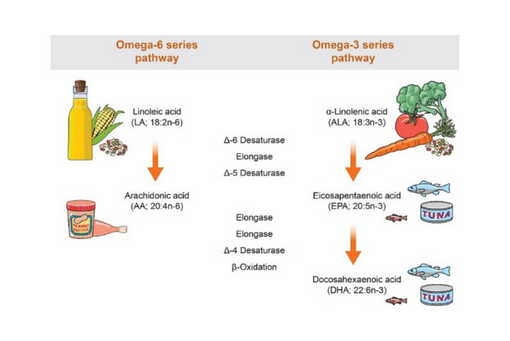Circulating Omega-6 and Omega-3 Polyunsaturated Fatty Acids in Painful Temporomandibular Disorder and Low Back Pain
Abstract
Preclinical studies demonstrate opposing effects of long-chain polyunsaturated fatty acid (PUFA) metabolites on inflammation and nociception. Omega-6 (n-6) PUFAs amplify both processes while omega-3 (n-3) PUFAs inhibit them. This cross-sectional study examined relationships between PUFAs in circulating erythrocytes and 2 chronic idiopathic pain conditions: temporomandibular disorder (TMD) and low back pain in a community-based sample of 503 U.S. adults. Presence or absence of TMD and low back pain, respectively, were determined by clinical examination and by responses to established screening questions. Liquid chromatography-tandem mass spectrometry quantified PUFAs. In multivariable logistic regression models, a higher ratio of n-6/n-3 long-chain PUFAs was associated with greater odds of TMD (odds ratio ((OR) = 1.75, 95% confidence limits (CL): 1.16, 2.64) and low back pain (OR = 1.63, 95% CL: 1.07, 2.49). Higher levels of the pronociceptive n-6 long-chain arachidonic acid (AA) were associated with a greater probability of both pain conditions for women, but not men. Higher levels of the antinociceptive long-chain n-3 PUFAs eicosapentaenoic and docosahexaenoic acids were associated with a lower probability of both pain conditions for men, but not women. As systemic inflammation is not a hallmark of these conditions, PUFAs may influence idiopathic pain through other mechanisms. PERSPECTIVE: This cross-sectional clinical study found that a higher ratio of circulating n-6/n-3 long-chain PUFAs was associated with greater odds of 2 common chronic overlapping pain conditions. This suggests that the pro and antinociceptive properties of n-6 and n-3 PUFAs, respectively, influence pain independently of their well-established inflammatory pathways.
Keywords: Epidemiology; idiopathic pain; lipidomics; omega-6/omega-3 long-chain PUFA ratio; pain intensity.Citation
Sanders, A. E., Weatherspoon, E. D., Ehrmann, B. M., Soma, P. S., Shaikh, S. R., Preisser, J. S., Ohrbach, R., Fillingim, R. B., & Slade, G. D. (2022). Circulating omega-6 and omega-3 polyunsaturated fatty acids in painful temporomandibular disorder and low back pain. The Journal of Pain, 23(10), 1724–1736. https://doi.org/10.1016/j.jpain.2022.05.008


